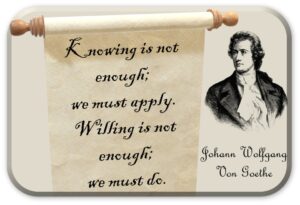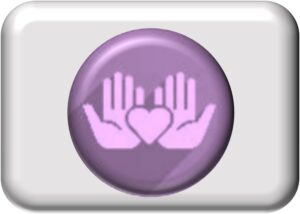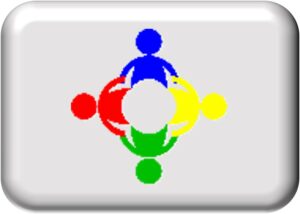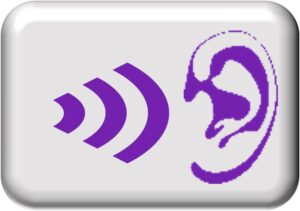
Communication skills need continuous honing
Business Coaching
Communication even more challenging after the pandemic
We all have challenges in communication in the workplace and at home because we are interacting with people either we want to or don’t want to. Especially nowadays when the pandemic brought a host of virtual, offline and hybrid workplaces, and along with them the variety of their advantages and disadvantages in communication, but in the overall company culture.
And communication is often the root cause of many good and bad events, a basis of every relationship, a starting point of every project, and thus a skill that is absolutely necessary in every aspect of our life, but we often take it for granted and don’t work on honing it. Knowing how to speak doesn’t qualify for knowing how to communicate.
Poor communication guilty as charged

Majority of misunderstandings, tensions, hard feelings, and failure to accomplish what we want is actually caused by poor communication. Needless to say, communication starts in our head with the way we communicate with ourselves in the first place, how we think things through, look before we leap, and then express our thoughts verbally or non-verbally.
It is vital that we are careful, clear, transparent and kind with ourselves to start with.
Communication at home

When we know what we want to express or achieve and how we want to deliver our message, we are continuously in this communication machine with our family members, friends, neighbors, people at the store, etc.
Normally, we want to maintain good relationships, but it can be tough sometimes because we cannot neglect emotions and we have to learn how to set healthy boundaries.
Communication in the workplace
Then, at work we come in touch with different people with different personalities, opposing attitudes, various beliefs, and a whole another value system.
Normally we spend a big chunk of the day with those people and we have to especially carefully manage our communication system because we don’t want problems with our bosses, team members or, God forbid, customers or suppliers.
Of course, at the same time we must be efficient and effective because we are there to complete certain tasks on time after all.
Mastery of business communication is desperately needed, but we often don’t pay much attention to this.
Watch out how you communicate with customers
Another level of communication and more sophistication is required with our customers because they are the ones who pay our bills, lunches, vacations, drinks, etc.
There we must be particularly careful, clear, transparent, respectful and, above all, kind. We don’t want our customers to have any bad aftertaste when interacting with us in any way. You know how one slight slip of a tongue can harm customer experience and make them immediately think of another supplier.
Communication with suppliers equally important
Often times, in small and medium businesses, we encounter attitudes that suppliers are not that important, that we don’t have to be that personable when interacting with them just because we are paying them. And this is totally and utterly wrong because they hell are important because if they botch something up or leave you in the lurch, you cannot meet the needs of your customers, and we know where it goes from there.
This is why we prepared a little cheat sheet of important communication principles so that you constantly remind yourself of good communication practices and apply them in your everyday life.
As you might know, knowledge itself is not the power, but the applied knowledge is power.
Everything counts in communication:
🤨 every lifted eyebrow
🙄 every rolling of eyes
😮 every sigh
😏 every microscopic twitch on your cheek
The principles are as follows:
1. Your perception of reality ≠ the other person’s perception of reality
For every single thing that is outside of our head, we all have different interpretations, associations, thoughts, ideas, feelings. Everybody perceives reality differently, even this sentence that you have read now. That is the first thing that we must keep in mind when interacting with others.
Nothing implies and nothing is normal or understood. Everyone sees, hears, smells, feels, tastes everything in a different way because we bring all our knowledge, memories, values, beliefs, experience into the communication process.
Respect the perception of others and you will be respected, just as you want others to do that to you.
2. The meaning of communication is the reaction it elicits
Whatever we do with others causes a certain response or reaction, that’s why it is crucial to understand that we must observe others’ reactions carefully, take their reactions into account, and think thoroughly how we approach people. Analyze the reactions to see what you can change, what different approach to take, because it all depends on you, it is never about the other person.
3. You cannot not communicate
Even when you say nothing or don’t react in any way, you do communicate. Remember that communication is constant and everywhere. Even if you don’t say anything or don’t reply to that email or text someone back, you are telling something, and who knows what the other person might conclude from your behavior.
4. What really matters: 7% spoken words, 38% tone of voice, 55% body language?
Non-verbal communication is undoubtedly important. Often, you may encounter the communication rule 7% (spoken words) – 38% (tone of voice) – 55% (body language), which was mentioned in Professor Albert Mehrabian’s studies in the 1960s. However, it is quite often misrepresented as a general rule of communication. It only applies to situations where a person is expressing feelings or attitudes, and the verbal and nonverbal cues are inconsistent. If somebody says “I’m fine” with a frown and a sarcastic tone, we’re likely to trust their body language and tone more than the actual words. That’s what Mehrabian studied. It is the tone and body language that might signal something completely different to what you wanted to convey. You may say something that maybe doesn’t totally resonate with you and people will take guesses from your move, smile, absence of sparkle in your eyes, glow of your face, etc. Some people notice every single detail and listen with their heart, too. Be careful that you are really in harmony with what you are saying or writing, or not saying at all for that matter. From a neuroscience standpoint, our amygdala and limbic system are hyper-attuned to facial expressions, tone, and body language as survival mechanisms. They evolved to detect threats or deception before words are even processed by the neocortex.
5. Listen carefully, listen attentively, listen thoughtfully
Good listeners are few and far between nowadays. Often, we listen just to respond, and not to hear the other person, and it causes myriads of misunderstandings and annoyance. We don’t want any hard feelings. We know that a lot of mental, emotional and physical energy is required to listen actively, but it becomes easier with practice.
While listening carefully, maintain eye contact and focus on all non-verbal expressions of the other person, and repeat some words that you heard so that the other person knows that you really listened and heard the message.
6. Ask open-ended questions
Open-ended questions open people, open discussion, open interest. Having a habit of asking questions starting with who, what, where, when, why and how, will take you a long way. Unlike closed-ended questions that just lead you to a yes or no, and the conversation stops. If you happen to ask a closed-ended question, think of an open-ended one to follow up. However, make sure it does not sound like an interview.
Open-ended questions together with active listening make for a good rapport, and a good rapport opens hearts and minds.
7. Summarize to show that you have understood the message of your interlocutor
Always quickly summarize what you heard, repeat certain words your interlocutor used and ask if you correctly understood what the other person told you.
8. Make sure your interlocutor has understood your message
Also ask your interlocutor if your message was clear, if there is anything missing, and further clarification needed.
9. Be totally clear and concise
Clarity is the key to any effective communication. When you write something or are bound to say something, check with yourself if everything is clear and transparent, if someone may have doubts or ask additional questions.
Conciseness is another accompanying element as you should express yourself briefly without unnecessary words. Many people are not crazy about tons of unnecessary details. Bear in mind that yours and your interlocutor’s time is precious. Time is the most expensive resource one can have.
10. Be flexible – adapt your communication style
There are several types of communication styles to be aware of:
♦ passive
♦ aggressive
♦ passive-aggressive
♦ manipulative
♦ assertive
♦ Passive style means that the authentic ideas and thoughts of the individual are usually not shared with the rest of the team, thus putting a limit on the information that is distributed amongst the team.
♦ Aggressive communication is characterized by being controlling, demanding and sometimes hostile. As a polar-opposite of passive communication, an aggressive communicator will openly express their opinion without thinking twice, usually in a loud and dominant voice.
♦ Passive-aggressive behavior involves subtly expressing negative feelings through actions instead of handling them directly.
♦ Manipulative style of communication uses cunning, deceit and influence to control the outcome of the conversation, and thus the actions of the people around them.
♦ Assertive communicators are able to express their honest thoughts in a polite and respectful way that considers other peoples’ opinions and feelings.
Actually, assertive is the most appropriate style, but it is important to recognize the other styles and adapt and react when you recognize them.
Honing of communication skills is a never-ending story but a joyful one because we always learn something new about ourselves and others, and nevertheless, there is always new people in business bringing new challenges.
Besides, honing the skill is definitely needed with our partners, kids, friends and neighbors, practically everywhere we go or don’t go.
If you want to learn more about business communication, you might be also interested in our training Handling difficult business conversations.
With a little bit of theory and a lot of exercises, you will master immediately applicable communication tools and techniques needed to be successful in your professional environment.

















